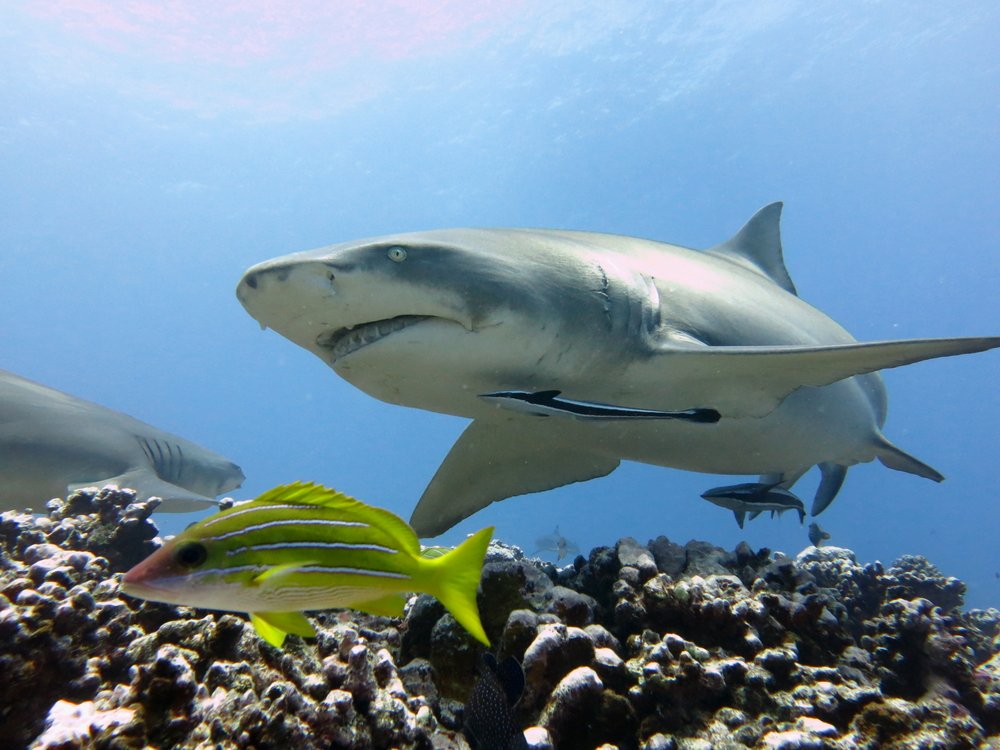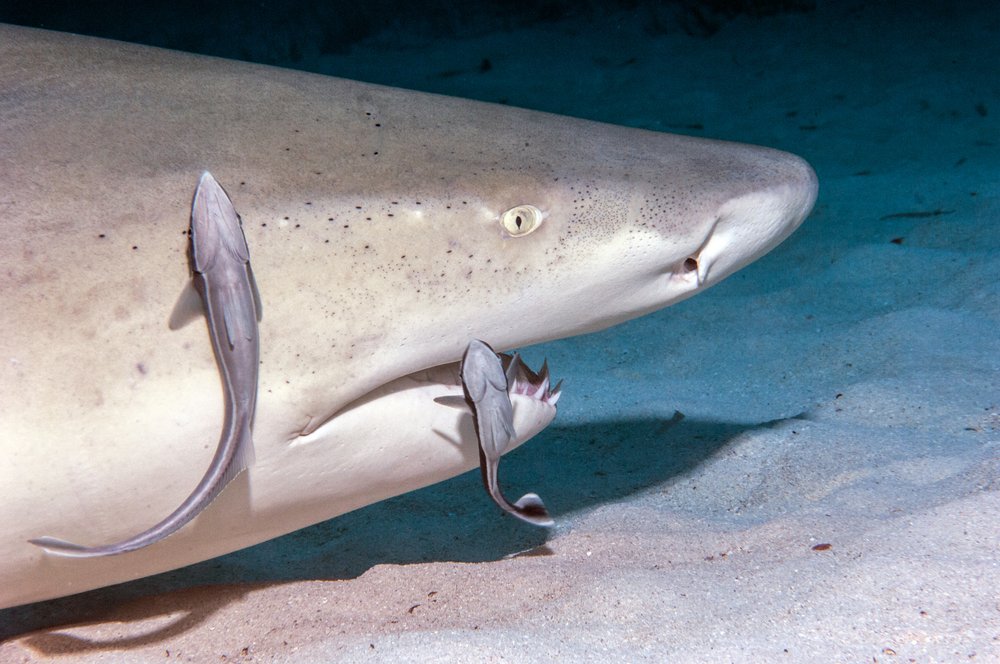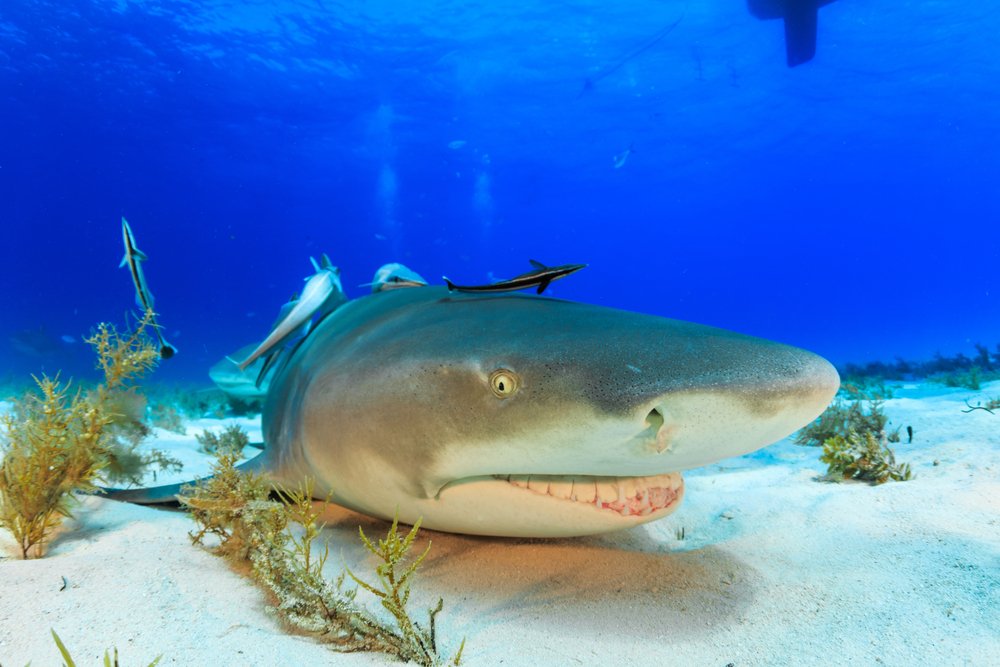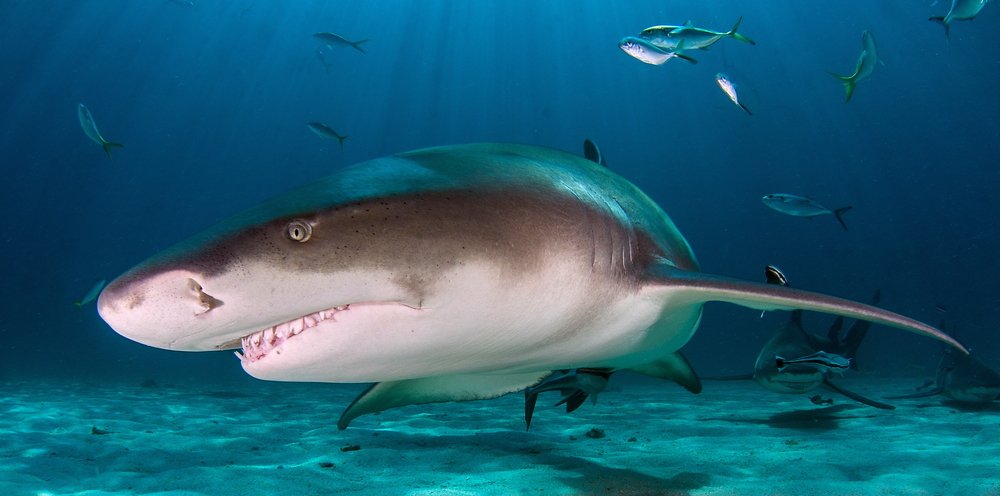Have you ever wondered how many Lemon Sharks are left in the world? Estimates put the global population of lemon sharks at 200,000 and 500,000, with the vast majority of these fish inhabiting the waters off the American coast.
Lemon sharks, with their vibrant yellow hue and sleek bodies, are a captivating species that play a crucial role in marine ecosystems. However, their population has been on a decline in recent years, raising concerns among conservationists and marine biologists.
Table of Contents
Characteristics of Lemon Sharks
Lemon sharks (Negaprion brevirostris) are a species of requiem shark found in tropical and subtropical coastal waters around the world. They are known for their distinct yellow-brown coloration and their sleek bodies that allow them to navigate through the water with grace.
When the shark lives near the coast, its yellow color helps it blend in with the sand surface of the water, which serves as an excellent camouflage.
These sharks can grow up to 10 feet (3 meters) in length and are typically found in shallow, coastal habitats such as mangroves, lagoons, and coral reefs.
Like all cartilaginous fish, lemon sharks have a lot of electroreceptors in their heads. These are called the ampullae of Lorenzini. These receptors pick up electrical pulses sent off by possible food. This lets these animals that hunt at night find their prey in the dark.

Habitat
You can find these sharks in the warm Atlantic, Caribbean, and Pacific seas. They like to live near coral reefs or shallow coastal waters.
Lemon sharks like to live in warm, shallow water with a sandy or rocky bottom. The temperature of the surroundings affects a person’s body temperature, which in turn affects bodily functions like metabolism and growth. Because of this, lemon sharks choose to live in warm water to keep their metabolisms at their best.
Researchers think that they stay away from places with lots of sea grass because it makes it harder for them to find food. Lemon sharks like to live in or near mangroves that are close to shallow water. These places are often where many fish species raise their young.
How Many Lemon Sharks Are Left In The World? Causes of Decline
Several factors have contributed to the decline in lemon shark populations. One of the primary reasons is human activities, including overfishing for their meat, fins, and liver oil. Lemon sharks often get caught as bycatch in commercial fishing operations, further threatening their survival. Additionally, habitat destruction, such as the degradation of mangrove forests and coral reefs, has reduced their available breeding and nursery grounds.

Conservation Efforts For Protecting Lemon Sharks
Efforts are being made worldwide to conserve lemon sharks and protect their habitats. Research and monitoring programs help scientists gather data on lemon shark populations, their migration patterns, and breeding behavior. These findings inform conservation strategies and help develop effective management plans. Furthermore, protected marine areas and marine reserves play a vital role in safeguarding lemon shark habitats, allowing populations to recover and thrive.
The Importance of Lemon Sharks
Preserving lemon sharks is not only crucial for the survival of this species but also for the health and balance of marine ecosystems. As apex predators, lemon sharks help regulate the population of prey species, maintaining the delicate balance of food chains. Their presence also attracts ecotourism, providing economic benefits to local communities that rely on sustainable marine tourism.

Fun Facts about Lemon Sharks
1. The longest lemon shark ever seen was about 12.1 feet (3.7 m) long.
2. Lemon sharks can live up to 30 years and weigh up to 551 pounds (250 kg).
3. The lemon shark gets its name from the yellow-brown color of its skin, which helps it blend in with the sand in the tropical seas it lives in.
4. You can find lemon sharks up to 300 feet (90 m) deep.
5. Lemon sharks eat a lot of different types of fish, rays, crabs, seabirds, and even other sharks.
Conclusion
While the decline in lemon shark populations is concerning, there is still hope for their conservation and recovery. By raising awareness about the threats they face, supporting research and monitoring efforts, and advocating for the protection of their habitats, we can contribute to their survival.
Also Read: How many Angel Sharks are left in the world?





